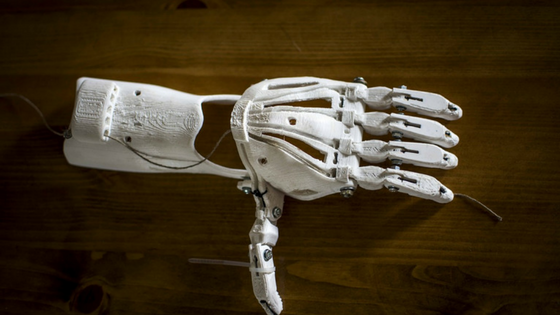Along with exciting innovations come cost increases for patients and providers
A lot can change in a year. That’s especially true in health care. Last December in our annual predictions post, we said that wearables had hit a rough patch as the industry struggled with what to do with all that data. Fast-forward a year: “Today, Apple Watch is poised to become the world’s best selling wearable. And, the market is quickly diversifying as hearables (once again led by Apple) and clinical wearables gain importance,” reported health care technology news site HIT Consultant. (Hearables, by the way, are Bluetooth-connected, wireless earbuds and headphones that can improve hearing loss and act as voice-activated assistants, among other things.)
Along with exciting new innovations, however, the New Year will also usher in increasing health care costs that will be felt by both patients and providers. Read on to find out what to expect in 2018.
Using 3D printing to address hearing loss
Researchers at the University of Maryland School of Medicine here in Baltimore are looking to 3D printing for solutions to hearing loss. A study examined the use of 3D-printed implants of the three bones of the middle ear to treat ossicular conductive hearing loss. Currently, implants are made of stainless steel or ceramic.
“The ossicles are very small structures, and one reason the surgery has a high failure rate is thought to be due to incorrect sizing of the prostheses,” Jeffrey D. Hirsch, an assistant professor of radiology at the University of Maryland School of Medicine, who authored the study, said in a statement. “If you could custom-design a prosthesis with a more exact fit, then the procedure should have a higher rate of success.”
That’s where 3D printing comes in, already being used for dental implants, hearing aids, and eyeglasses. The accuracy of the technology is game-changing, and the potential to cut surgery time is another benefit.
For more on this topic, see How 3D Printing is Revolutionizing Health Care
A less cumbersome approach to sleep apnea
The Cleveland Clinic’s annual list of top medical innovations includes a flu vaccine patch, a scalp-cooling cap that reduces hair loss in chemotherapy patients, and “the world’s first artificial pancreas,” which helps to stabilize blood glucose in diabetics.
Of special interest to ENT doctors is an implant designed to relieve sleep apnea, a condition that affects 21 million Americans. The implant delivers stimulation to open key airway muscles during sleep, reported HealthcareIT News. “Controlled by a remote or wearable patch, the technology acts like a pacemaker, helping to synchronize the intake of air with the action of the tongue.” The hope is that these neuromodulation systems—which have had positive results in clinical testing—would be an alternative to the cumbersome continuous positive airway pressure device (CPAP). Though CPAPs are widely prescribed, as many as 46 to 83 percent of obstructive sleep apnea patients are nonadherent.
For a related article, see How Technology is Improving Medication Adherence
Health care costs continue to increase
In 2017, we saw a major change in the way health care is paid for, with the primary responsibility shifting from payers and providers to patients. We wrote about helping your patients navigate health care costs and the importance of price transparency in medicine. Things are not looking up for patients in 2018: with the future of the Affordable Care Act uncertain, health insurance premiums in several states are set to increase by as much as 50 percent or more.
Practices aren’t off the hook, either. PwC’s Health Research Institute (HRI) projects 2018 will see the first uptick in medical cost growth in three years, and reports that “businesses will have to tackle the price of services as well as the rate of utilization to reduce medical cost trend in the future.”
What can health care providers do? The PwC report stated that many “are focusing on improving care management and optimizing their use of physician extenders and nonclinical staff to keep costs down and optimize patient care.”
For more on this topic, see Why Non-Physician Providers Are More Important Than Ever
If you’re excited by what the New Year may bring, great! If you’re discouraged, take heart: as we’ve seen, a lot can change in a year. To stay up to date on all the latest health care news and trends in 2018, subscribe to our newsletter.

